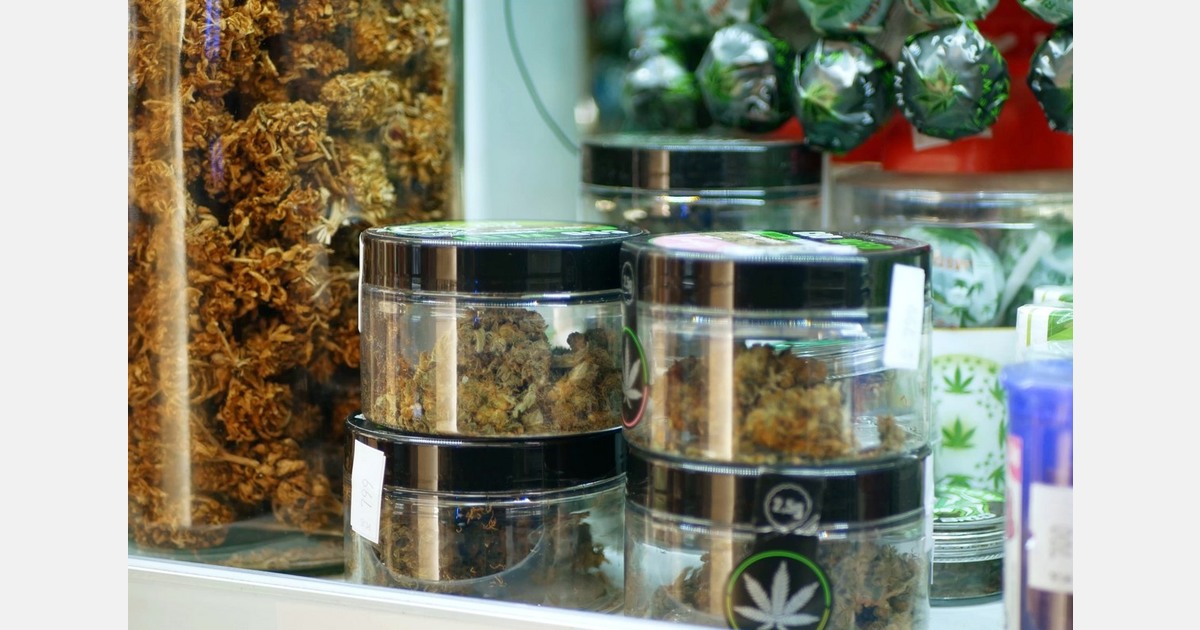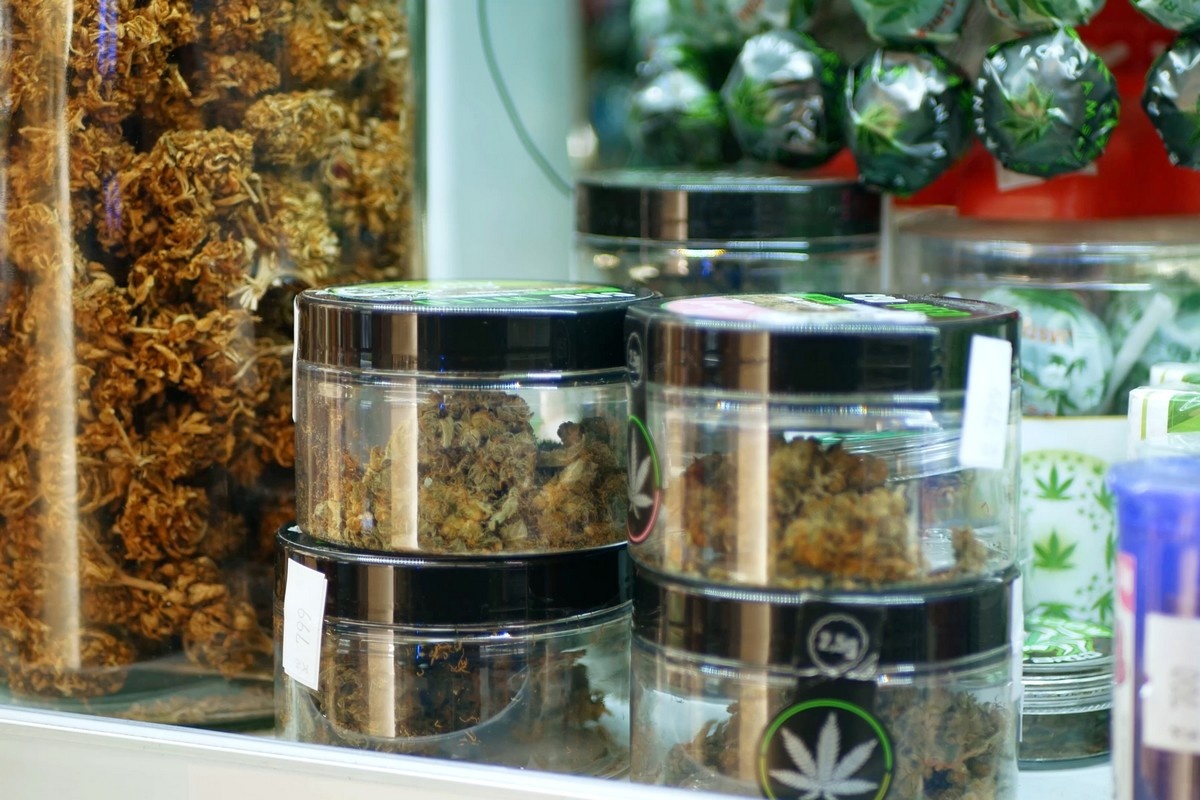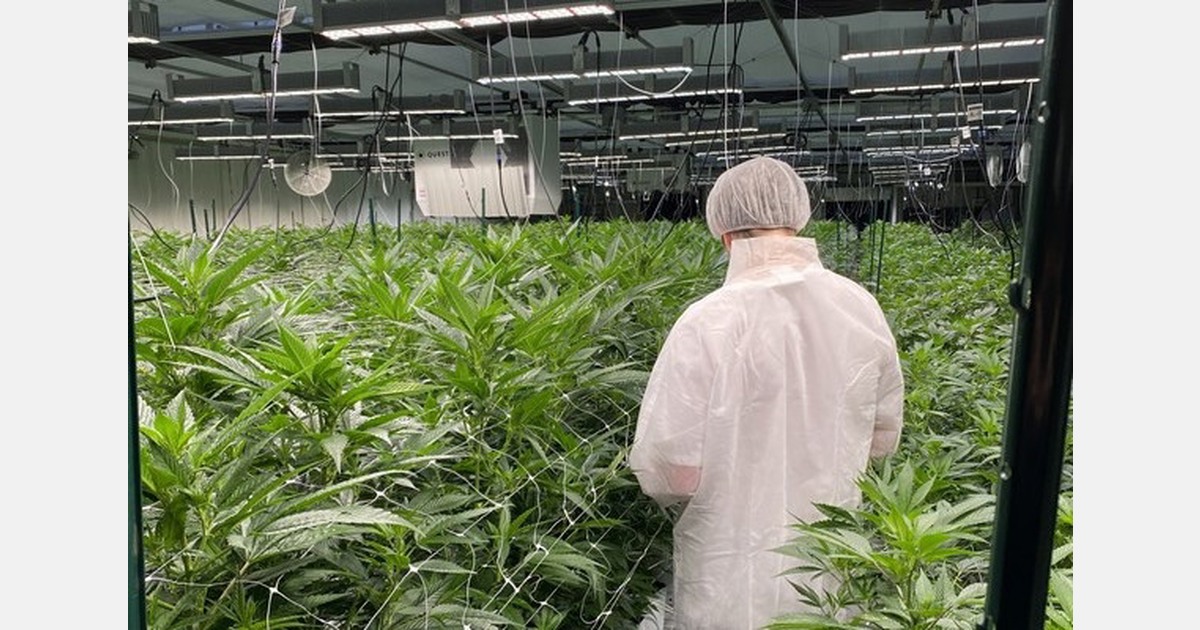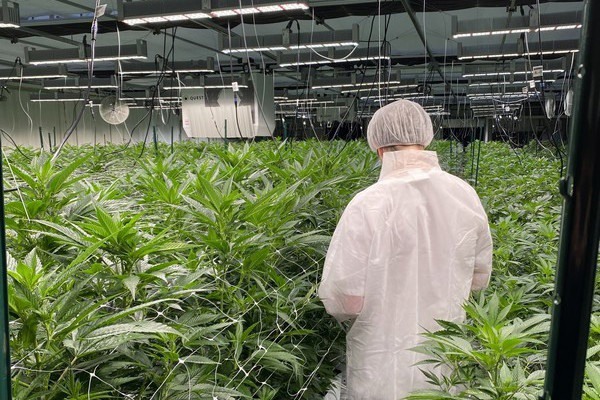The Ohio House of Representatives has passed a bill that would do just that make significant changes to the state’s voter-approved marijuana legalization law removing several protections for consumers, while also adding some new restrictions on hemp products intended to align the two sectors of the cannabis industry.
After passing through several House committees this week, with major amendments, the House approved Sen. Stephen Huffman’s (R) legislation on a vote of 87-8 on Wednesday.
Although the measure was previously approved by the Senate, it will have to return to that chamber for concurrence, or go to a bicameral conference committee, before going to the governor’s desk.
The House watered down some controversial provisions of the Senate-passed bill, but advocates are concerned that it would still make major changes to the marijuana law voters approve in 2023.
Rep. Brian Stewart (R), who has led the legislation through the House, argued before the vote that the legislation effectively achieves “carefully crafted compromise” among lawmakers with differing views on cannabis issues.
“It’s been very difficult to debate this bill, but most of our important bills usually are. Instead of being some kind of weak-sauce tie-breaker mash-up, this bill does what we claim we want to come to Columbus,” he said. “It tackles the issue head-on. It makes tough decisions. It respects and implements the views of residents and advocates from affected industries. This bill strikes a good balance between Ohioans’ individual liberties, their safety, the financial well-being of our local communities, and the need to protect the health and safety of Ohio’s children.”
Rep. Jamie Callender (R), who sponsored legislation to legalize marijuana before voters passed the reform on the ballot, said the bill is “not perfect,” but argued that lawmakers “must take action” to address intoxicating hemp and other pending issues.
“This is the revised code we’re writing,” he said. “I anticipate that there will be many more bills on these issues in the near and long term, as there should be … I will continue to work with all of them to make it better.”
While its supporters have described it as a less hands-off approach than the original Senate bill, the measure would make significant changes to existing legalization law, with several provisions that advocates say are in direct conflict with the will of voters and represent legislative overreach.
For example, the proposal would eliminate language in the current statute that provides anti-discrimination protections for people who legally use cannabis. It includes safeguards against adverse action in the context of child custody rights, the ability to perform organ transplants, and professional licensing.
It would also recriminalize possession of marijuana from any source other than a state-licensed Ohio dispensary or possession of marijuana from a legal household. Because of this, people can be charged with a felony for carrying cannabis purchased from a legal Michigan store in the Michigan area.
It would also ban the smoking of cannabis in outdoor public places, such as bar patios, and ban landlords from vaping marijuana in rental properties. Violation of this latter policy, even if it involves vaping in a person’s backyard in a rental property, would be a misdemeanor offense.
Karen O’Keefe, director of state policy for the Marijuana Policy Project (MPP), said in a letter to House lawmakers on Wednesday that SB 56 today “eliminates key protections of the law enacted by voters and re-criminalizes harmless behaviors that voters legalized.”
“Please reject this erosion of the liberties established by the voters,” he said.
Unlike the Senate-passed version of the bill, the House alternative would send cannabis sales tax revenue to local governments.
The legislation, amended by the House Judiciary Committee on Tuesday, also adds new restrictions on the hemp market. With the exception of beverages, hemp products would only be allowed to be sold in licensed hemp dispensaries.
Stores and breweries would be allowed to sell hemp-derived THC drinks, with new advertising restrictions to avoid appealing to youth. Products for on-premise consumption would be limited to 5 mg of THC, but adults could buy drinks of up to 10 mg to take home. Stronger drinks could also be manufactured in Ohio, but only for sale to people outside the state.
The bill would also include a new $1.20 per liter tax on hemp beverages.
The measure Earlier on Wednesday, the Treasury Board also amended it to clarify that people seeking to have their marijuana possession charges dropped would not have to prove the exact amount of cannabis they possessed. The amendment would also allow for dismissal of dismissed marijuana charges, not just convictions.
The amendment also aligns the beverage cannabinoid policy with the beverage laws and clarifies that the penalties for selling marijuana, hemp beverages or cannabinoid products to a minor would be the same regardless of the type of product.
Wednesday’s House vote comes weeks after the governor issued emergency regulations banning the sale of hemp products for 90 dayswith instructions to the legislature to consider permanent regulations. Last week, however, a county judge ordered the state to enforce that policy in response to a legal challenge.
“Quite frankly, the legislature didn’t take action,” Gov. Mike DeWine (R) said in an interview published this week. “I’m still hopeful that the legislature will step in and take action.”
House Speaker Matt Huffman (R) recently commented on the relative lack of progress on marijuana and hemp legislation since voters approved legalization on the ballot in 2023, highlighting the stark divisions within the Republican caucus.
There are “people who think marijuana should be legalized and regulated,” others who “think hemp products should be on par with everything that happened in the statute that started and then “people, like me, who are prohibitionists, don’t think it should be legalized at all and should be rare,” he said.
“I would say the prohibitionists have lost this debate.”
—
It’s Marijuana Time tracking hundreds of cannabis, psychedelic and drug policy bills in state legislatures and Congress this year. Patreon supporters by pledging at least $25/month, you’ll get access to our interactive maps, charts, and audio calendars so you never miss a development.
Learn more about our marijuana bill tracking and become a Patreon supporter to gain access
—
Meanwhile, last month, the Ohio Department of Cannabis Control (DCC) introduced new proposed rules to underpin the state’s marijuana legalization law. establishing plans to update regulations on labeling and packaging requirements.
The proposal arrived a few weeks later Medical and adult marijuana sales in Ohio officially surpassed $3 billionData from the state Department of Commerce (DOC) shows.
the state About $703 million worth of recreational cannabis was sold in the first year the law was enactedAccording to data from DCC.
In March, a survey of 38 municipalities by the Ohio State University (OSU) Moritz School of Law found local leaders were “unequivocally opposed” to earlier proposals which would have cut planned funding..
Meanwhile, in Ohio, adults can buy more than double the amount of marijuana starting in June than were under previous limits, state officials determined that the market could sustainably supply patients and adult users of medical cannabis.
The governor announced his desire individually in March Marijuana tax revenue to support police training, local jails and behavioral health services. He said funding for police training was a top priority, even if it wasn’t approved by voters in 2023.
Ohio’s Senate President also pushed back against criticism of the Senate bill, claiming that the legislation does not respect the will of the electorate and it would have little effect on the products available in stores.
user photo Philip Steffan.


 Cannabis News2 months ago
Cannabis News2 months ago
 Florida2 months ago
Florida2 months ago
 Canadian Cannabis News2 months ago
Canadian Cannabis News2 months ago
 Best Practices2 months ago
Best Practices2 months ago
 Video2 months ago
Video2 months ago
 Video2 months ago
Video2 months ago
 Cannabis Products & Services News2 months ago
Cannabis Products & Services News2 months ago
 Video2 months ago
Video2 months ago



























